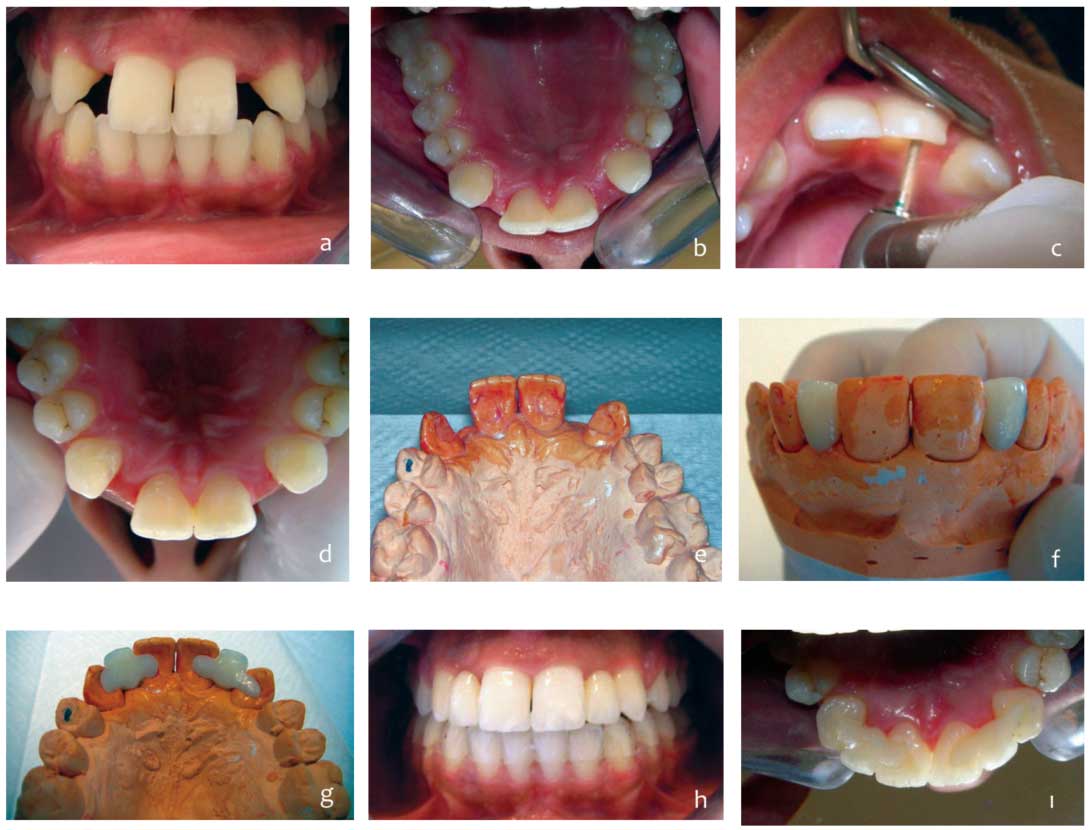9.5. All-Ceramic Adhesive Bridges
These kinds of bridges are conservative restorations because the parts used as holder make the dental tissues to be removed as little as possible and they took advantage of adhesive properties of the resin cements. In adhesive bridges, there is a bond between the tooth surface and adhesive materials and the adhesive material and restoration material. While the material to be adhered to is initially metal alloy, the use of ceramics has become almost one alternative with the current improvements.
The tooth tissue to be adhered to can be enamel or dentin. The first applications are the bridges consist of bodies used as aesthetic material veneer and metal holders with holes for retention made by Rochette in 1973 and called Rochette bridges.
Rochette köprülerdeki tutucuların, deliklerden taşan rezinin fonksiyonel stresler ve aşınma nedeniyle sızıntı oluşturmaları ve tutuculuklarını kaybetmeleri nedeniyle, delikler yerine elektrokorozyon yöntemi kullanılarak oluşturulan köprülere, uygulamanın ilk yapıldığı, Maryland Üniversitesine atfen Maryland köprüler olarak isimlendirilmiştir.
Due to the leakage and loss of their holding ability and functional stress and corrosion of resin overflowing from the holes of the holders at the Rochette bridges, the bridges created by using electro-corrosion method instead of holes, were named as Maryland bridges referring to Maryland University where the application is performed at the first time.
Today, according to the adhesive philosophy the bridges called as adhesive bridges are successfully used in non-cavity anchorage, especially in one or two mandibular anterior missing teeth with the minimal tissue removal from the dentition. Again, they are the bridge types used for many years for periodontal splint.
Common cavities, overbite (covered closure and change of color, shape and position of adjacent teeth) are contraindicated. It is not suitable to have more missing teeth (more than two), periodontal problems in the anchorage to be taken, mobile teeth and use them with non-motivated patients.
In adhesive restorations, it is always necessary that the preparation should be in a way to create a resistant infrastructure together with retention from the palatinal or lingual surfaces. By evaluating the case for retention and resistance, the cutting depth made on these surfaces can be increased. General acceptance is the preparation of Black 3 cavities, including the proximal surfaces facing the body.
If the measure of the adhesive bridges which can be produced by conventional or CAD-CAM methods with the conventional silicone-based measure materials or polyether, the model obtained from these measurements must either be digitally scanned, or the digital measure of the mouth must be taken directly from the mouth.
 Figure 9.5 a, b. Presence of healthy and aesthetic adjacent teeth fixed with orthodontic treatment, lack of congenital maxillary lateral teeth was created by the need of conservative work. c, d. A preparation which not deep was made for the Black 3 type cavity on the palatinal surfaces of central and canine teeth for the planned full ceramic adhesive bridge. e, f, g. The full ceramic bridges prepared conventionally on the models obtained, h, ı. were placed on the teeth with the help of composite resin cement after the examination and applications performed on the models.
Figure 9.5 a, b. Presence of healthy and aesthetic adjacent teeth fixed with orthodontic treatment, lack of congenital maxillary lateral teeth was created by the need of conservative work. c, d. A preparation which not deep was made for the Black 3 type cavity on the palatinal surfaces of central and canine teeth for the planned full ceramic adhesive bridge. e, f, g. The full ceramic bridges prepared conventionally on the models obtained, h, ı. were placed on the teeth with the help of composite resin cement after the examination and applications performed on the models.

